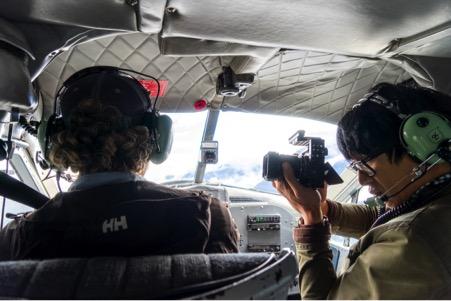The Importance of Digital Media
Research from the past few years indicates that digital media is influencing the decisions of potential travellers more and more. People consistently say that they spend more time on a digital device than traditional media; they like the convenience of researching online; and they trust the opinions of online personalities.
From a marketing perspective, digital media offers many benefits. Even if you are a relatively small World Heritage site, it offers a much more affordable way to reach a larger and more diverse audience. It also allows for shorter lead-time in the planning and implementation of campaigns.
Whether it is using the interactivity of social media, the emotional depth of video, or the large reach of online publications, there are clear opportunities to change the behaviour of tourists you want to target. But if you want to reach them, you need to go where they are – and that is in the digital world.
All Digital Media Guidelines
The Importance of Digital Media >
Creating Your Own Digital Media Identity >
Generating Free Media Coverage >
Paying for Media Coverage >
Monitoring Results >
Types of Digital Media
This guide will focus on editorial content in three main areas – social media, independent blogs, and larger online publications.
Even within this definition, there are many different types of digital media. Travel stories have evolved far beyond just a combination of text and images. Good storytelling in the travel sphere now can include photos on Instagram, videos on Facebook, live broadcasts on Youtube, lists on Buzzfeed, or diary entries on a blog.
One of the consequences of the rise of digital media is that attention spans have generally become shorter. Sometimes the most effective digital marketing can now be the simplest pieces of content. The journalists, bloggers and influencers in this guide might not be producing traditional forms of media – and you should be prepared for them not to gather their material in traditional ways.

The Difference Between Journalists, Bloggers and Influencers
What’s in a name? These days – less and less!
You might hear different terms being used when talking about digital content creators. The three most common are journalist, blogger and influencer. The problem is, there can be quite a bit of crossover between the three. Before going any further with the guide, let us define these descriptions.
When the term ‘journalist’ is used, this guide is referring to someone who is paid by a larger publication like a newspaper to produce content on their behalf. These days, it is also very likely this article will appear online.
When the term ‘blogger’ is used, this guide is talking about someone who has their own website as their primary means of publication. It is likely they will also use social media and other digital outlets.
And when the term ‘influencer’ is used, it means a person who has a very large (or significant within a niche demographic) audience on at least one social media channel, such as Instagram or YouTube. It is quite possible they do not also have a website.
In some ways, all three types of media have some key similarities – they all produce content about travel that is seen by loyal audiences and inspires decisions. The main differences come in two ways.
Firstly, each of those groups will have different needs when collecting content. For example, a journalist may only need to produce text and so can move faster through a destination than a blogger who could also need photos and video. Or, for another example, an influencer may need the ‘perfect’ background for a photo and will place more emphasis on that than gathering information.
The second main difference is the business model. A journalist will probably receive payment from their publication. However, a blogger or influencer may require payment from you to produce content. Or they might have commercial deals with a travel company or other brand that need to be taken into account when working together.
Sometimes it can seem a bit daunting – but these differences are what makes it so exciting!
All Digital Media Guidelines
The Importance of Digital Media >
Creating Your Own Digital Media Identity >
Generating Free Media Coverage >
Paying for Media Coverage >
Monitoring Results >
